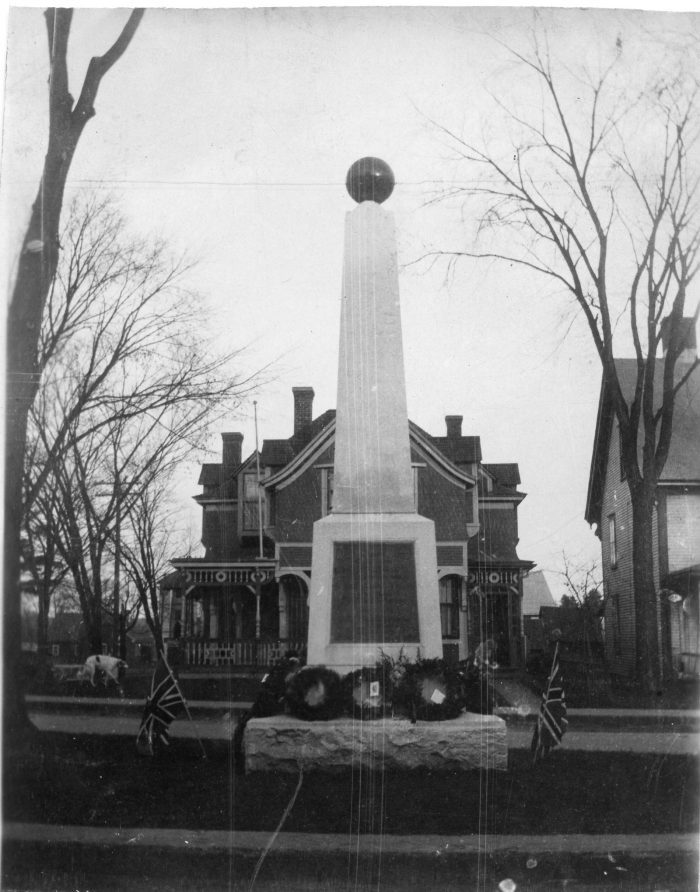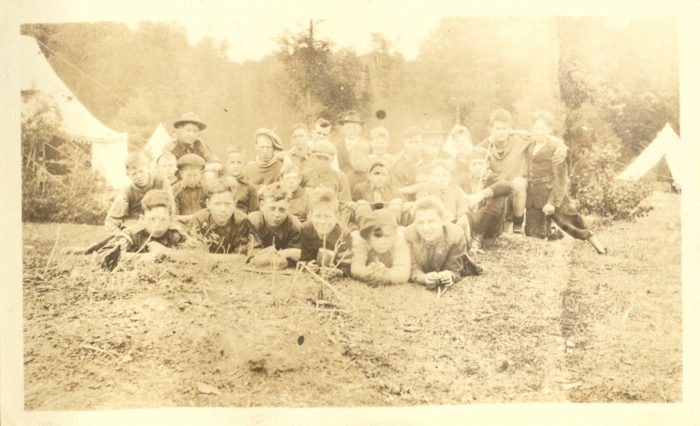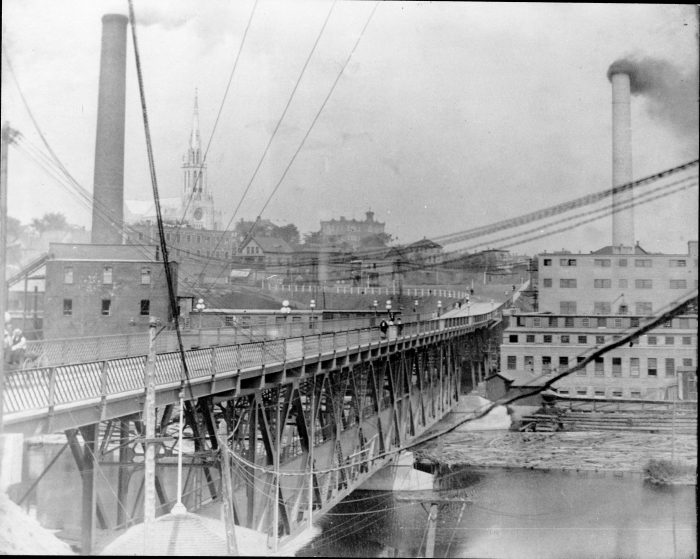

Share
1923 in the Eastern Townships
December 6th, 2023
By Jazmine Aldrich
We at the ETRC can hardly believe that October is almost over and 2024 is just around the corner. As we embrace the last quarter of 2023, let’s reflect on a slice of life in the 1923 Eastern Townships, 100 years ago.
In East Angus, an exciting feat of engineering was making its first appearance. The Taschereau Bridge, which replaced the Brompton Pulp and Paper Company’s bridge over the St. Francis River, was inaugurated on August 1, 1923. It was named for the Quebec Liberal and 14th Premier, Louis-Alexandre Taschereau, who served in that role from 1920 to 1936. The bridge cost nearly $200,000 (almost 3.5 million, today) and was funded by the Government of Quebec as well as the Brompton Pulp and Paper Company. Decades before the Quiet Revolution, the inauguration ceremony began with a blessing of the bridge by the Monseigneur Alphonse-Osias Gagnon – at that time, Auxiliary Bishop of the Catholic Diocese of Sherbrooke. A banquet was held, following the inauguration ceremony, and Premier Taschereau addressed the gathering about his reservations regarding the Government of Canada’s proposition to prohibit the sale of Canadian pulp to the United States. Mr. Taschereau certainly knew his audience!
Meanwhile, from August 17th to 27th, 1923, the Boy Scouts’ 2nd Sherbrooke Troop were headed to camp in Ayer’s Cliff. The direction of the camp was under former District Scoutmaster, Peter M. Dennis, with Troop Leader Lynn Trussler serving as assistant director. The tents were supplied by the army courtesy of Colonel John J. Penhale. Aside from their regular scout training, the camp included swimming, campfire singalongs, hikes, fishing, baseball, and plenty of other activities. The camp was open to all scouts of the Eastern Townships, ranging from other Sherbrooke troops to Coaticook scouts, and even some boys who were not yet scouts but were potential recruits. A modest price of $5 per child for 2nd Sherbrooke Troop scouts and $6 for all others was charged. Parents and friends were encouraged to visit the camp and witness the fun being had. Saturday, August 25th was reserved as a special sports day where three silver cups were up for grabs, along with first- and second-prize ribbons. In an announcement published in the Sherbrooke Daily Record on July 31, 1923, it was asserted that “the camp is undoubtedly going to be a success” and a success, it was.
Over 2,500 people attended the unveiling of the war memorial in Lennoxville on December 16, 1923. The granite cenotaph with its bronze tablet bore the names of forty-seven soldiers who gave their lives during the First World War. At the unveiling ceremony, the 53rd Regimental Band played “Onward Christian Soldiers.” The Mayor Henry Washburn S. Downs delivered the opening address and Lieutenant-Colonel Reverend Arthur Huffman McGreer, Principal of Bishop’s College, delivered a dedication address. Reverend Father Leblanc gave an address in French. Reverend Canon Robert William Ellegood Wright said the prayer of dedication and Brigadier-General Dennis Colburn Draper unveiled the monument. The war memorial was originally located in what was known as the Square, though not the Square Queen that we know in 2023; the Square in 1923 was located at the intersection of Main Street (now Queen) and Belvidere (now College). The cenotaph was moved to its present location next to the Borough Office (at that time, the Town Hall) in 2000 and further inscriptions have since been added to honour those who fought in the Second World War, as well as in Korea, Vietnam, and Afghanistan.

Photo credit : P998 Eastern Townships Resource Centre Graphic Material collection
War memorial in the Square in Lennoxville, near the intersection of Main Street (now Queen Street) and Belvidere Street (now College Street). The photograph was probably taken shortly after the unveiling of the monument in December 1923. Those familiar with the Lennoxville of 2023 may recognize the building in the background, which presently houses the Golden Lion Pub.

